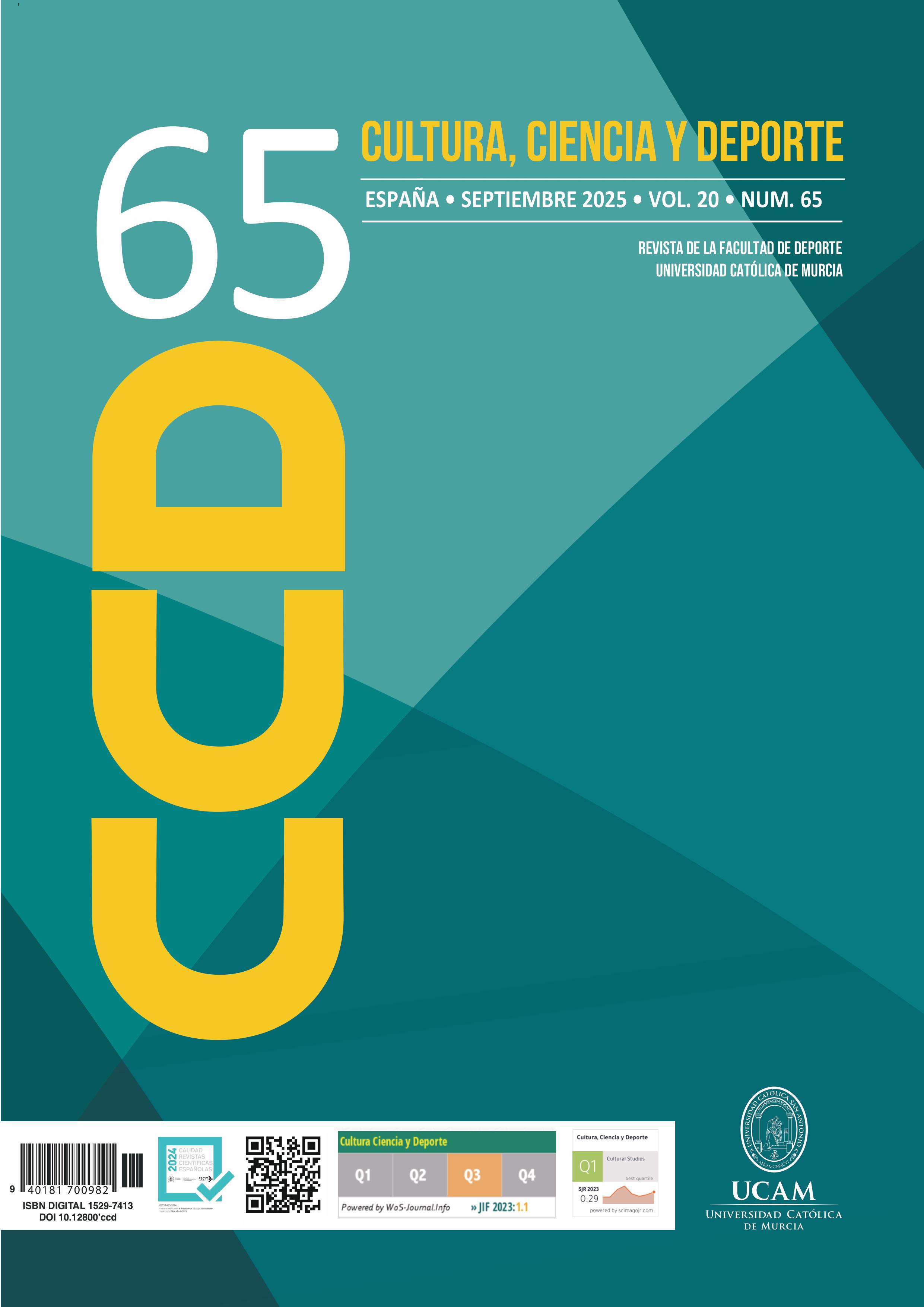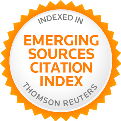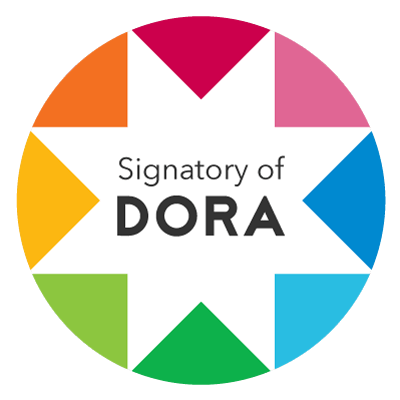Impacto de los Descansos Activos Gamificados mediante Digital Storytelling en Educación Primaria
DOI:
https://doi.org/10.12800/ccd.v20i65.2395Palabras clave:
aprendizaje activo, bienestar estudiantil, gamificación educativa, narrativas digitales, rendimiento escolarResumen
Este estudio abordó la implementación de Descansos activos gamificados mediante Digital Storytelling en Educación Primaria, como estrategia para mejorar el
aprendizaje y bienestar psicológico estudiantil. Aunque existen evidencias sobre los beneficios de la actividad física, gamificación y narrativa digital por separado,
no consta ninguna investigación que los combine. Por tanto, el objetivo del presente estudio fue analizar el impacto de los Descansos Activos gamificados con
Digital Storytelling en variables psicológicas, motivacionales, emocionales, académicas y perfil de jugadores, según género, actividad físico-deportiva, tipo de deporte
y edad, en estudiantes de Educación Primaria. La muestra fue de 424 estudiantes (201 niñas y 223 niños) de 9 a 13 años (M = 10.4; DE = 1.07) y se empleó un diseño
cuasiexperimental longitudinal con mediciones pre y post intervención, aplicándose los análisis estadísticos no paramétricos U de Mann-Whitney, Kruskal-Wallis
y Wilcoxon, además de la correlación de Spearman y regresión logística multinomial. Los resultados revelaron mejoras significativas en la motivación intrínseca,
flow, asimilación de contenidos y reducción del perfil dominador, además de niveles altos de satisfacción y emociones positivas. Se destacó un aumento del nivel
"Excelente" en el rendimiento académico, del 23.8% al 39%, y se identificaron diferencias de género, actividad físico-deportiva, tipo de deporte y edad. En conclusión,
los Descansos Activos gamificados con Digital Storytelling han supuesto una estrategia innovadora para enriquecer el aprendizaje y fomentar el bienestar estudiantil,
pudiendo maximizarse su impacto personalizando las características sociodemográficas y contextuales del alumnado.
Citas
Abderrahim, L., & Plana, M. G. (2021). A theoretical journey from social constructivism to digital storytelling. The EuroCALL Review, 29(1), 38. https://doi.org/10.4995/eurocall.2021.12853
Alcaraz-Muñoz, V., Alonso Roque, J. I., & Yuste Lucas, J. L. (2022). Diseño y validación de la escala de juegos y emociones para niños (GES-C). Cuadernos de Psicología del Deporte, 22(1), 28–43. https://doi.org/10.6018/cpd.476271
Alvariñas-Villaverde, M., Portela-Pino, I., & Soto-Carballo, J. (2018). Level of motivation and physical activity in primary education students. Journal Of Human Sport And Exercise. https://doi.org/10.14198/jhse.2018.13.proc2.30
Calero, A., & Injoque-Ricle, I. (2013). Propiedades psicométricas del Inventario Breve de Experiencias Óptimas (Flow). Revista Evaluar, 13(1). https://doi.org/10.35670/1667-4545.v13.n1.6796
Csikszentmihalyi, M. (1990). Fluir. Una psicología de la felicidad. Barcelona: Editorial Kairós.
Dallolio, L., Gallé, F., Masini, A., Valeriani, F., Ceciliani, A., Cagno, A., Galeone, D., Pecoraro, P., Valerio, G., Liguori, G., Spica, V., Brandi, G., Baldelli, G., Capelli, G., Coco, D., Corradi, M., Cortis, E., Deiana, P., Rosa, E., Marini, S., Mulato, R., Parisi, A., Pesce, C., Riegger, S., Staiano, A., Siniscalco, A., Trombetta, M., & Ubaldi, F. (2022). Active breaks: a strategy to counteract sedentary behaviors for Health Promoting Schools. A discussion on their implementation in Italy. Annali di igiene: medicina preventiva e di comunita. https://doi.org/10.7416/ai.2022.2532.
De la Fuente, J. & Martínez-Vicente, J. M. (2004). Escalas para la Evaluación Interactiva del Proceso de Enseñanza-Aprendizaje, EIPEA. Manual Técnico y de Aplicación. Madrid: EOS.
Frikha, M., Mezghanni, N., Chaâri, N., Said, N., Alibrahim, M., Alhumaid, M., Hassan, M., Alharbi, R., Amira, M., & Abouzeid, N. (2024). Towards improving online learning in physical education: Gender differences and determinants of motivation, psychological needs satisfaction, and academic achievement in Saudi students. PLOS ONE, 19. https://doi.org/10.1371/journal.pone.0297822.
González-Arévalo, C., & Lleixá-Arribas, T. (2010). Didáctica de la educación física. Barcelona: GRAÓ.
Grasse, K. M., Kreminski, M., Wardrip-Fruin, N., Mateas, M., & Melcer, E. F. (2022). Using Self-Determination Theory to Explore Enjoyment of Educational Interactive Narrative Games: A Case Study of Academical. Frontiers In Virtual Reality, 3. https://doi.org/10.3389/frvir.2022.847120
Hamari, J., Koivisto, J., & Sarsa, H. (2014). Does gamification work? A literature review of empirical studies on gamification. 47th Hawaii International Conference on System Sciences, 3025–3034. IEEE Xplore. https://doi.org/10.1109/HICSS.2014.377
Hornstra, L., Veen, I., Peetsma, T., & Volman, M. (2015). Innovative learning and developments in motivation and achievement in upper primary school. Educational Psychology, 35, 598 - 633. https://doi.org/10.1080/01443410.2014.922164.
Institute of Medicine (2013). Educating the Student Body: Taking Physical Activity and Physical Education to School. National Academies Press (US): Washington, DC.
Jinmin, Z., & Qi, F. (2023). Relationship between learning flow and academic performance among students: a systematic evaluation and meta-analysis. Frontiers In Psychology, 14. https://doi.org/10.3389/fpsyg.2023.1270642
Khalaf, B. (2018). Traditional and Inquiry-Based Learning Pedagogy: A Systematic Critical Review. International Journal of Instruction. https://doi.org/10.12973/IJI.2018.11434A
Kilic, F. (2014). Awareness and cognitive load levels of teacher candidates towards student products made by digital storytelling. Turkish Online Journal Of Distance Education, 15(3). https://dergipark.org.tr/en/download/article-file/155734
Kim, D., & Li, M. (2020). Digital storytelling: facilitating learning and identity development. Journal of Computers in Education, 8, 33 - 61. https://doi.org/10.1007/s40692-020-00170-9.
Larson, R. W., & Rusk, N. (2011). Intrinsic Motivation and Positive Development. Advances In Child Development And Behavior, 89-130. https://doi.org/10.1016/b978-0-12-386492-5.00005-1
Ley Orgánica 3/2020, de 29 de diciembre, por la que se modifica la Ley Orgánica 2/2006, de 3 de mayo, de Educación. Boletín Oficial del Estado, núm. 340, de 30 de diciembre de 2020. https://www.boe.es/eli/es/lo/2020/12/29/3
Liu, M., & Huang, Y. (2016). An Inquiry-Based Digital Storytelling Approach for Increasing Learner Autonomy in English. 219-224. https://doi.org/10.1007/978-3-319-52836-6_23.
Lorenzo-Lledó, Alejandro, Pérez Vázquez, E., Andreu Cabrera, E., & Lorenzo Lledó, G. (2023). Aplicación de la gamificación en Educación Infantil y Educación Primaria: análisis temático (Application of gamification in Early Childhood Education and Primary Education: thematic analysis). Retos, 50, 858–875. https://doi.org/10.47197/retos.v50.97366
Mantjes, J. A., Jones, A. P., Corder, K., Jones, N. R., Harrison, F., Griffin, S. J., & Van Sluijs, E. M. (2012). School related factors and 1yr change in physical activity amongst 9–11 year old English schoolchildren. International Journal Of Behavioral Nutrition And Physical Activity, 9(1). https://doi.org/10.1186/1479-5868-9-153
Marczewski, A. (2015). Gamification: Even ninja monkeys like to play. Unicorn edition [Gamificación: incluso a los monos ninja les gusta jugar. Edición unicornio]. Gamified UK.
Martínez Campillo, R. L. (2017). Implementación del puzle de Aronson apoyado en el Flipped Classroom para la medición de la condición física en los alumnos de 2º de ESO. Revista Española De Educación Física Y Deportes, (417), Pág. 21–37. https://doi.org/10.55166/reefd.vi417.543
Martinović, D., Ilić, J., & Višnjić, D. (2011). GENDER DIFFERENCES IN SPORTS INVOLVEMENT AND MOTIVATION FOR ENGAGEMENT IN PHYSICAL EDUCATION IN PRIMARY SCHOOL. Problems Of Education In The 21st Century, 31(1), 94-100. https://doi.org/10.33225/pec/11.31.94
Méndez-Giménez, A. & Pallasá-Manteca, M. (2023). The Effects of Active Breaks on Primary School Students’ Attentional Processes and Motivational Regulation. Apunts Educación Física y Deportes, 151, 49-57. https://doi.org/10.5672/apunts.2014-0983.es.(2023/1).151.05
Moreno, J. A., González-Cutre, D., Chillón, M., & Parra, N. (2008). Adaptación a la Educación Física de la Escala de las Necesidades Psicológicas Básicas en el Ejercicio. Revista Mexicana de Psicología, 25, 295-303.
Murcia, J. A. M., Coll, D. G., & Garzón, M. C. (2009). Preliminary Validation in Spanish of a Scale Designed to Measure Motivation in Physical Education Classes: The Perceived Locus of Causality (PLOC) Scale. The Spanish Journal Of Psychology, 12(1), 327-337. https://doi.org/10.1017/s1138741600001724
Mustafa, S. M. S., Elias, H., Noah, S. M., & Roslan, S. (2010). A Proposed Model of Motivational Influences on Academic Achievement with Flow as the Mediator. Procedia - Social And Behavioral Sciences, 7, 2-9. https://doi.org/10.1016/j.sbspro.2010.10.001
Niemi, H., & Multisilta, J. (2016). Digital storytelling promoting twenty-first century skills and student engagement. Technology, Pedagogy and Education, 25, 451 - 468. https://doi.org/10.1080/1475939X.2015.1074610.
Organización Mundial de la Salud. (2020). WHO Guidelines on physical activity and sedentary behaviour. In World Health Organization. https://www.who.int/publications/i/item/9789240015128
Pine, B. J., & Joseph, B. (1998). Welcome to the experience economy. Harvard Business Review.
Prieto-Andreu, J., & Moreno-Ger, P. (2024). Jugar correctamente: validación empírica de la escala Gamertype para el aprendizaje basado en juegos en la educación superior. Revista Española de Pedagogía, 82(288). https://doi.org/10.22550/2174-0909.4056
Quintero González, L. E., Jiménez Jiménez, F., & Area Moreira, M. (2018). Más allá del libro de texto. La gamificación mediada con TIC como alternativa de innovación en Educación Física (Beyond the textbook. Gamification through ITC as an innovative alternative in Physical Education). Retos, 34, 343–348. https://doi.org/10.47197/retos.v0i34.65514
Rahimi, M. (2019). Digital Storytelling in Language Classes. Advanced Methodologies and Technologies in Modern Education Delivery. https://doi.org/10.4018/978-1-5225-2255-3.CH213.
Ribeiro, S. P. M. (2017). Digital Storytelling: Learning to Be in Higher Education. En Springer eBooks (pp. 207-223). https://doi.org/10.1007/978-3-319-51058-3_15
Ros-Morente, A., Cuenca, E., & Guiu, G. (2018). Analysis of the Effects of two Gamified Emotional Education Software's in Emotional and Well-being Variables in Spanish Children and Adolescents. Int. J. Emerg. Technol. Learn., 13, 148-159. https://doi.org/10.3991/ijet.v13i09.7841
.
Ryan, R. M., & Deci, E. L. (2000). Self-determination theory and the facilitation of intrinsic motivation, social development, and well-being. American Psychologist, 55(1), 68-78. https://doi.org/10.1037/0003-066x.55.1.68
Sailer, M., & Homner, L. (2020). The gamification of learning: A meta-analysis. Educational Psychology Review, 32(1), 77–112. https://doi.org/10.1007/s10648-019-09498-w
Siddiqui, S., Alam, M., Azmi, J., Ahmad, M., Wiquar, R., & Aziz, A. (2021). Integration of ICT-learning Environments: A paradigm Shift from Traditional Teaching Pattern. En Proceedings of the 2nd International Conference on ICT for Digital, Smart, and Sustainable Development. https://doi.org/10.4108/eai.27-2-2020.2303238
Sweller, J. (1988). Cognitive load during problem solving: Effects on learning. Cognitive Science, 12(2), 257–285. https://doi.org/10.1207/s15516709cog1202_4
Villafuerte, V. P. E., Arcos, W. R. P., Morán, O. o. V., & Rodas, G. C. A. (2024). La gamificación como estrategia didáctica para mejorar la motivación y el rendimiento académico de los estudiantes en Educación Básica Media. Polo del Conocimiento, 9(8), 875-894. https://doi.org/10.23857/pc.v8i12.6319
Watson, A., Timperio, A., Brown, H., Best, K., & Hesketh, K. D. (2017). Effect of classroom-based physical activity interventions on academic and physical activity outcomes: a systematic review and meta-analysis. International Journal of Behavioral Nutrition and Physical Activity, 14(114), 1-24. https://doi.org/10.1186/s12966-017-0569-9
Wigfield, A., Tonks, S., & Klauda, S. L. (2009). Expectancy-Value Theory. In Handbook of motivation at school (pp. 69-90). Routledge.
World Medical Association (2013). World Medical Association Declaration of Helsinki: Ethical Principles for Medical Research Involving Human Subjects. Journal of the American Medical Association, 310(20), 2191-2194. https://doi.org/10.1001/jama.2013.281053
Younis, A., & Hatim, M. (2021). Trends in higher education under neoliberalism: Between traditional education and the culture of globalization. Educational Research and Reviews. https://doi.org/10.5897/ERR2020.4101.
Zagita, C., & Sun, J. C. (2021). The Effect of Instructional and Interactive Feedback on EFL Students’ Cognitive Load in Digital Storytelling. 2021 International Conference On Advanced Learning Technologies (ICALT), 4, 282-284. https://doi.org/10.1109/icalt52272.2021.00091
Валеева, В., Valeeva, V., Фугелова, Т., & Fugelova, T. (2019). Traditions and Innovations in Primary Education. Primary Education. https://doi.org/10.12737/article_5db001f111d3a5.09227709
Descargas
Publicado
Cómo citar
Número
Sección
Licencia
Derechos de autor 2025 Creative Commons Attribution License

Esta obra está bajo una licencia internacional Creative Commons Atribución-NoComercial-CompartirIgual 4.0.
Los autores que publican en esta revista están de acuerdo con los siguientes términos:- Los autores conservan los derechos de autor y garantizan a la revista el derecho de ser la primera publicación del trabajo al igual que licenciado bajo una Creative Commons Attribution License que permite a otros compartir el trabajo con un reconocimiento de la autoría del trabajo y la publicación inicial en esta revista.













